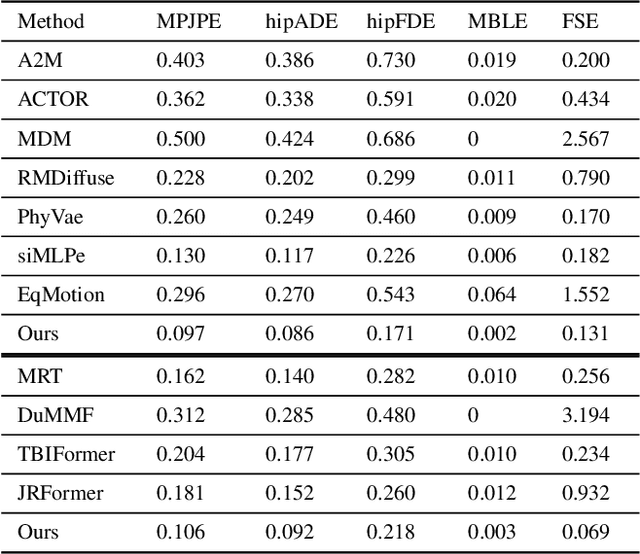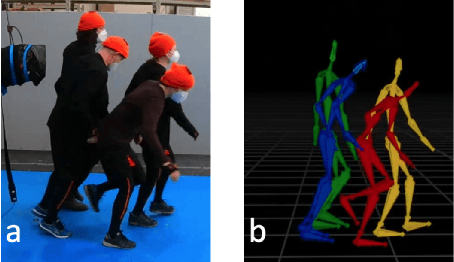Baiyi Li
Two-Person Interaction Augmentation with Skeleton Priors
Apr 09, 2024Abstract:Close and continuous interaction with rich contacts is a crucial aspect of human activities (e.g. hugging, dancing) and of interest in many domains like activity recognition, motion prediction, character animation, etc. However, acquiring such skeletal motion is challenging. While direct motion capture is expensive and slow, motion editing/generation is also non-trivial, as complex contact patterns with topological and geometric constraints have to be retained. To this end, we propose a new deep learning method for two-body skeletal interaction motion augmentation, which can generate variations of contact-rich interactions with varying body sizes and proportions while retaining the key geometric/topological relations between two bodies. Our system can learn effectively from a relatively small amount of data and generalize to drastically different skeleton sizes. Through exhaustive evaluation and comparison, we show it can generate high-quality motions, has strong generalizability and outperforms traditional optimization-based methods and alternative deep learning solutions.
Human Motion Prediction under Unexpected Perturbation
Mar 23, 2024



Abstract:We investigate a new task in human motion prediction, which is predicting motions under unexpected physical perturbation potentially involving multiple people. Compared with existing research, this task involves predicting less controlled, unpremeditated and pure reactive motions in response to external impact and how such motions can propagate through people. It brings new challenges such as data scarcity and predicting complex interactions. To this end, we propose a new method capitalizing differential physics and deep neural networks, leading to an explicit Latent Differential Physics (LDP) model. Through experiments, we demonstrate that LDP has high data efficiency, outstanding prediction accuracy, strong generalizability and good explainability. Since there is no similar research, a comprehensive comparison with 11 adapted baselines from several relevant domains is conducted, showing LDP outperforming existing research both quantitatively and qualitatively, improving prediction accuracy by as much as 70%, and demonstrating significantly stronger generalization.
 Add to Chrome
Add to Chrome Add to Firefox
Add to Firefox Add to Edge
Add to Edge